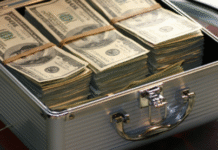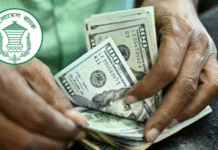Here is an Economy Census that reveals much more is happening in rural Bangladesh than in the country’s urban localities.
Driven by boost to the service sector, the number of ‘economic units’ has doubled in Bangladesh during the last 10 years.
The census shows 72 percent of the ‘economic units’ are in the rural areas, mostly in household-based economic activities.
More than eight million households and establishments were engaged in economic activities across the country – up 118% over the 3.8 million recorded during the 2001-2003 census.
Expectedly, Dhaka accounted for the largest number of ‘economic units’ with 2.5 million — up from 1.2 million in 2001-2003 fiscal.
Dhaka was by Chittagong, Rajshahi, Rangpur, Khulna, Barisal and Sylhet.
Once a famine-affected region, Rangpur has crossed Khulna in the number of economic units in recent times while Rajshahi stood in the third place.
The Bangladesh Bureau of Statistics (BBS) on Sunday published the preliminary report of the Economic Census 2013.
Finance Minister Abul Maal Abdul Muhith told the ceremony where the report was released that it bore testimony to the country’s progress.
“Our progress in the last 10 years has been substantial.”
Meanwhile, policymakers have criticised service sectors for playing dominating role and covering nearly half of the economic units.
BBS conducted the third economic census between the March and May this year. Before that, the census was conducted for the first time in 1986 and the second one in 2001 and 2003.
Economic units were divided in three categories — permanent establishments, temporary establishments and economic households.
Rural boost
Dhaka is the number in the country with 32 percent of the total economic units. Chittagong is the second with 17 percent, followed by Rajshahi with 15 percent, Rangpur with 13.5 percent and Khulna with 12.8 percent.
Barisal and Sylhet were in the bottom of the list with only 4.8 percent and 4.5 percent of economic units, respectively.
In a press release, the Bangladesh Bureau of Statistics said rural economy had bloomed because of the high growth in the northern region.
The census report showed that rate of economic unit increase in urban areas is 62.90 percent in the last decade which was 150.60 percent in the rural areas.
Dominant services
Service sector, accounting for 45.91 percent of the total retail and wholesale businesses, played a major role in the country’s economic growth.
Transport and storage accounted for 13.65 percent, manufacturing 11.76 percent, and 8.48 percent other services.
The Finance Minister however expressed dissatisfaction over the lack of progress in the country’s manufacturing sector.
“Service sectors have made progress. But the progress in manufacturing is below expectations and somewhat stagnant.”


Economic households higher
The BBS report showed that the number of economic households have increased by nearly 700 percent in the last 10 years. At least 38 percent of the total economic units are economic households.
Permanent establishments increased by around 52 percent in the same time frame, currently accounting for 56 percent of the economic units.
Meanwhile, growth rate of temporary establishments was lower — nearly 49 percent in the last 10 years.
But the BBS report said that Bangladesh’s economic base was getting stronger and the country was moving consistently towards higher levels of industrialisation.
Source: bdnews24










